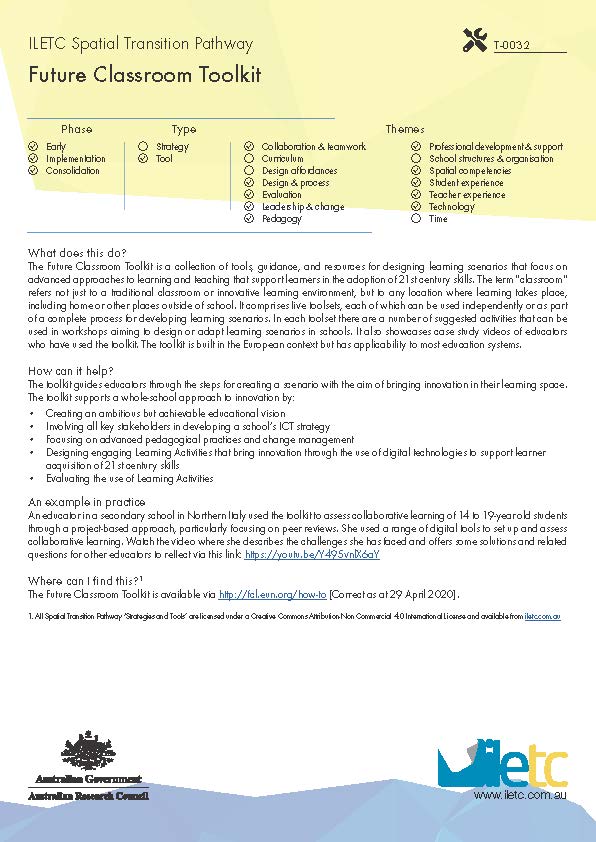| Introduction | Wayfinding activity | Spatial typologies | Spatial transition case studies | Spatial transition resources |
Spatial Transition Pathway
The Spatial Transition Pathway provides a framework for the strategies and tools which support teachers to make the journey of change into innovative learning environments. Strategy is defined as an explicit concept, theory or practice that enhances teachers’ use of innovative learning environments. A tool is an identifiable activity or protocol, that implements a strategy. You can use the database to search for strategies and tools by temporal phase or transition theme(s). If you would like to contribute a strategy or tool, please contact the ILETC team.
Future Classroom Toolkit
The Future Classroom Toolkit is a collection of tools, guidance, and resources for designing learning scenarios that focus on advanced approaches to learning and teaching that support learners in the adoption of 21st century skills. The term “classroom” refers not just to a traditional classroom or innovative learning environment, but to any location where learning takes place, including home or other places outside of school. It comprises five toolsets, each of which can be used independently or as part of a complete process for developing learning scenarios. In each toolset there are a number of suggested activities that can be used in workshops aiming to design or adapt learning scenarios in schools. It also showcases case study videos of educators who have used the toolkit. The toolkit is built in the European context but has applicability to most education systems.

